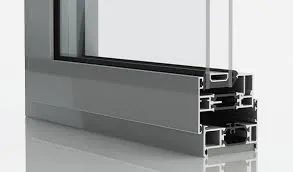Exploring the Beauty and Versatility of Ornamental Iron Designs for Your Home
The Art and Elegance of Ornamental Iron
Ornamental iron has long been celebrated for its unique blend of artistry and functionality. Whether used in fences, gates, railings, or furniture, this versatile material adds a touch of sophistication and timeless elegance to any setting. Rooted in centuries of craftsmanship, ornamental ironwork is not just a means of decoration; it represents a rich heritage and an enduring commitment to artful design.
Historically, the craft of ironworking dates back thousands of years. Ancient civilizations, from the Egyptians to the Romans, recognized the advantages of iron as a material for both practical and decorative purposes. In the Middle Ages, blacksmiths honed their skills, creating intricate designs that showcased their ingenuity and artistry. Today, ornamental iron continues this legacy by merging traditional techniques with modern design sensibilities.
The beauty of ornamental iron lies in its variety. Skilled artisans can create intricate patterns and unique shapes that reflect the individual preferences of their clients. From classic scrollwork to contemporary geometric designs, the possibilities are nearly limitless. This adaptability makes ornamental iron suitable for various architectural styles, from historic to modern homes.
ornamental iron

One of the most popular uses of ornamental iron is in fencing and gates. These structures serve not only as practical barriers but also as focal points for a property. A well-designed iron gate can enhance curb appeal, signaling a warm welcome to visitors while also providing security. Similarly, decorative iron railings can elevate the aesthetic of stairways and balconies, making them safer and more visually appealing.
In addition to structural applications, ornamental iron is frequently employed in furniture design. Tables, chairs, and beds crafted from iron can bring a rustic charm to a space or lend an industrial feel, depending on the finish and style chosen. The durability of iron ensures that these pieces can withstand the test of time, making them both a practical and beautiful investment.
Furthermore, the environmental sustainability of using recycled iron for ornamental purposes cannot be overlooked. As society moves towards greener practices, many artisans are embracing eco-friendly methods, repurposing old iron into stunning new designs. This not only minimizes waste but also adds a unique history and character to each piece.
In conclusion, ornamental iron is much more than a mere material; it is a canvas for creativity and expression. Its ability to combine beauty, durability, and versatility makes it a favored choice in both traditional and modern design. As we continue to appreciate the craftsmanship behind ornamental iron, we celebrate not just its aesthetic appeal but also its rich history and sustainable practices. Whether in architecture or furniture, ornamental iron is sure to remain a cherished element in our built environment for years to come.
-
Wrought Iron Components: Timeless Elegance and Structural StrengthNewsJul.28,2025
-
Window Hardware Essentials: Rollers, Handles, and Locking SolutionsNewsJul.28,2025
-
Small Agricultural Processing Machines: Corn Threshers, Cassava Chippers, Grain Peelers & Chaff CuttersNewsJul.28,2025
-
Sliding Rollers: Smooth, Silent, and Built to LastNewsJul.28,2025
-
Cast Iron Stoves: Timeless Heating with Modern EfficiencyNewsJul.28,2025
-
Cast Iron Pipe and Fitting: Durable, Fire-Resistant Solutions for Plumbing and DrainageNewsJul.28,2025
-
 Wrought Iron Components: Timeless Elegance and Structural StrengthJul-28-2025Wrought Iron Components: Timeless Elegance and Structural Strength
Wrought Iron Components: Timeless Elegance and Structural StrengthJul-28-2025Wrought Iron Components: Timeless Elegance and Structural Strength -
 Window Hardware Essentials: Rollers, Handles, and Locking SolutionsJul-28-2025Window Hardware Essentials: Rollers, Handles, and Locking Solutions
Window Hardware Essentials: Rollers, Handles, and Locking SolutionsJul-28-2025Window Hardware Essentials: Rollers, Handles, and Locking Solutions -
 Small Agricultural Processing Machines: Corn Threshers, Cassava Chippers, Grain Peelers & Chaff CuttersJul-28-2025Small Agricultural Processing Machines: Corn Threshers, Cassava Chippers, Grain Peelers & Chaff Cutters
Small Agricultural Processing Machines: Corn Threshers, Cassava Chippers, Grain Peelers & Chaff CuttersJul-28-2025Small Agricultural Processing Machines: Corn Threshers, Cassava Chippers, Grain Peelers & Chaff Cutters












